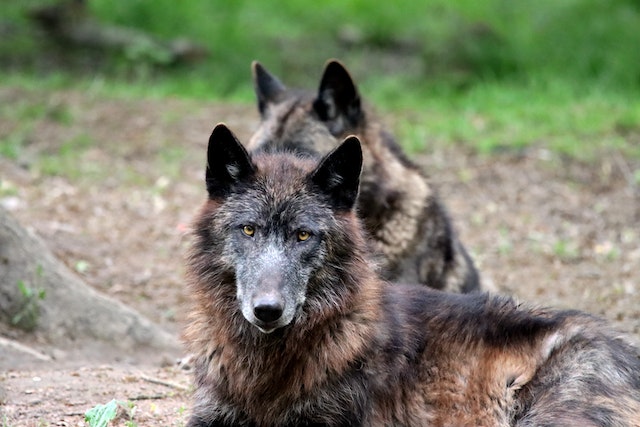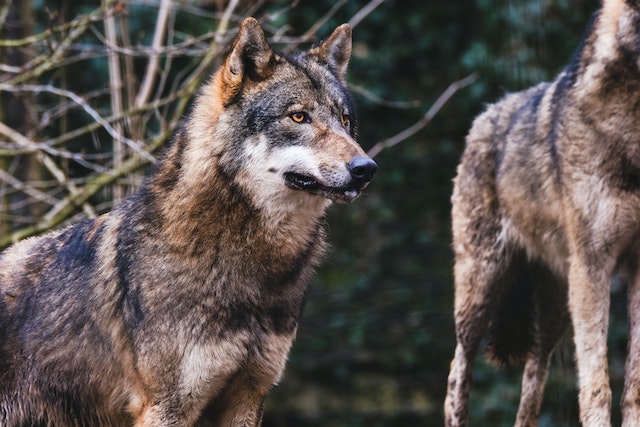Are Dogs and Wolf Same? Which is More Dangerous?
Dogs and wolves are both members of the Canidae family and are closely related to each other. They share a common ancestor Also, dogs and wolves have been domesticated separately and have evolved differently over time. So, are dogs wolves? The answer is both yes and no.
Yes, dogs are wolves in the sense that they share a common ancestor with wolves. Studies have shown that dogs are descended from grey wolves, specifically a subspecies are known as the Eurasian grey wolf.
Dogs have been domesticated thousands of years ago, and over time, humans selectively bred dogs for specific traits, such as size, coat color, and temperament. Despite these changes, dogs still share many traits and behaviors with their wolf ancestors, such as a hierarchical social structure, territorial behavior, and hunting instincts.
Dogs have evolved to become a distinct species from wolves, which means that they have developed unique physical and behavioral traits that set them apart. One of the most obvious differences between dogs and wolves is their appearance.
Dogs come in a wide variety of shapes and sizes, from tiny Chihuahuas to giant Great Danes, while wolves are generally larger and have a more uniform appearance. Wolves also have longer legs and narrower chests, which makes them better suited for running and hunting prey.

In terms of behavior, dogs are generally more social and cooperative than wolves. While wolves live in tight-knit family groups called packs, dogs are able to form close bonds with humans and other dogs outside of their immediate family. Dogs have also developed the ability to read and respond to human cues, which is a trait that wolves lack.
Dogs and Wolves Behavior Difference
So, what are the differences between dogs and wolves? Despite the same ancestors, they have some differences, and let’s look at it.
Socialization: Dogs have been domesticated for thousands of years, and have been selectively bred for traits that make them more friendly and cooperative with humans. As a result, dogs are much more socialized to humans than wolves are, and are generally more comfortable around people.
Hierarchy: Wolves live in hierarchical packs, with each individual having a specific rank in the social structure. In contrast, dogs do not have a rigid social hierarchy and are more likely to be comfortable with social equality.
Communication: While both dogs and wolves use body language to communicate, the two species have different signals and ways of expressing themselves. For example, wolves are more likely to use vocalizations like howling to communicate, while dogs rely more on body languages like tail wagging and facial expressions.

Prey Drive: Wolves are natural hunters and have a strong prey drive, while dogs have been selectively bred for specific purposes like herding or guarding. As a result, dogs may have varying levels of prey drive depending on their breed and individual temperament.
Dogs and Wolf Similarity
We looked at some of the differences between dogs and wolves, and now let’s look at some of the similarities.
Physical Appearance: Dogs and wolves have a similar body structure, with four legs, a tail, and a fur coat. They also have similar skull shapes, sharp teeth, and strong jaws.
Social Behavior: Both dogs and wolves are social animals and live in packs or groups. They use body language, vocalizations, and scent marking to communicate with each other and establish social hierarchies.
Diet: Dogs and wolves are both carnivores and have similar diets, consisting of meat, bones, and some plant matter.
Hunting Techniques: Dogs and wolves use similar hunting techniques, such as chasing, tracking, and pouncing on their prey.
Domestication: Dogs are descendants of wolves that were domesticated by humans thousands of years ago. As a result, they share many genetic traits and behaviors with their wild ancestors.
Dog or Wolf is more Dangerous
Both dogs and wolves can be dangerous in certain situations, but the level of danger depends on a variety of factors, including the individual animal’s temperament, socialization, and training.
In general, wild wolves are considered more dangerous than domesticated dogs because they have not been socialized to live with humans and may view people as a potential threat. However, wolf attacks on humans are rare, as wolves typically avoid human contact and are not interested in attacking humans as prey.
Domesticated dogs can also be dangerous if they are not properly trained or socialized. According to the Centers for Disease Control and Prevention, dogs bite approximately 4.5 million people in the United States each year, and some of these bites can be serious or even fatal.
Both dogs and wolves are wild animals with innate instincts and behaviors that can be unpredictable. Proper care, training, and socialization are key to ensuring that both dogs and wolves are safe and well-behaved around humans.
Doglime for more information on dogs.










